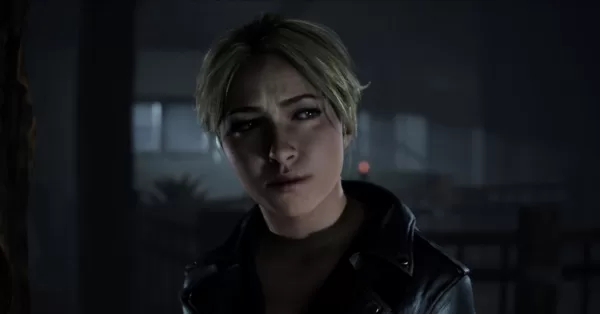Until Dawn (2024) Review | A Questionable Choice
It's scarier the second time around, for the right and wrong reasons.

The horror genre is one of the most unfortunate victims when it comes to unnecessary film remakes. Call it irony or poetic with the fact that Until Dawn, a game that is built on paying homage and parodying classic horror tropes, has also fallen into the same trap. Is it scarier the second time around? Here’s our Until Dawn (2024) review.
When Until Dawn was first released in 2015, it was a breath of fresh air for horror gaming. Blending slasher-movie tropes with intense decision-making and branching storylines, the game was praised for its cinematic tension, creative storytelling, and the ability to change the fates of its characters based on your actions. It became a beloved classic, thanks in part to its atmosphere, characters, and the innovative use of fixed camera angles that created a voyeuristic sense of dread, making players feel like they were being watched. Fast-forward to 2024, and Until Dawn has been rebuilt in Unreal Engine 5, promising a visually enhanced experience for a new generation of gamers. However, despite its visual upgrades, this remake struggles to live up to the legacy of the original in several crucial ways.
It’s scarier-ish?

First off, the graphics have undeniably received a major overhaul. The textures, environmental details, lighting, and overall visual fidelity are impressive. Every nook and cranny of the game feels richer and more immersive thanks to the new engine. However, these enhancements come at the cost of performance. Framerate issues frequently crop up, with noticeable dips that pull you out of the experience. Strangely enough, the original PS4 version still looks fantastic, especially when played on a PS5 where it runs at a smooth 60 FPS. This makes the 2024 remake feel strangely dated, especially considering its higher price tag. Some of the face models and animations also got tweaked with mixed results. Some look better than ever while the others clearly got the short end of the stick.
One of the major changes in this version is the shift in camera perspective. While the original game relied on fixed camera angles that heightened the tension and gave players a more cinematic experience, the remake opts for mostly an over-the-shoulder view. On one hand, this provides more control over what you see and lets you better appreciate the new environmental details. But on the other hand, it takes away the eerie feeling of being watched, a design choice that contributed so much to the original’s sense of dread. The shift to an over-the-shoulder view breaks some of the cinematic tension and makes the game feel more like a standard third-person adventure, losing a lot of what made it feel so unique the first time around.

Gameplay-wise, the remake stays true to the original structure with only a few minor new locations and additions. However, one major disappointment is the removal of the ability to run or fast-walk. Characters now feel heavier and sluggish to control, slowing down the pacing of exploration. This makes going off the beaten path to explore side areas feel like a chore, especially when you’re just looking for collectibles or new interactions.
Speaking of collectibles, the Totem system has also been altered. Totems, which provide players with premonitions of possible future events, are now harder to find, with their locations slightly shifted. This is a welcome change for returning players, as it adds a new layer of challenge. Unfortunately, the way you interact with the Totems has been made unnecessarily tedious. Instead of the quick, simple mechanic of picking up a Totem and flipping it around to see the vision, the remake requires you to slowly observe the surface of the Totem, hunting for a small spot to trigger the premonition. It’s a small change, but it feels frustratingly slow and adds nothing to the experience.
Until Dawn (2024) Review Final Verdict – 7/10

Aside from these changes, the remake introduces a new prologue at the end of the game, possibly hinting at a sequel. It almost feels like it’s the only reason the remake exists at all—to tease what’s coming next rather than truly improve on the original. Despite being marketed as a remake, many of the changes here feel superficial at best, and it’s hard not to see this as more of a remaster with a few added features.
At its core, Until Dawn is still Until Dawn. It is still Supermassive Games’ finest work, and its blend of interactive drama and horror holds up remarkably well. For new players, this is still a great way to experience one of the best horror games of the last decade. But for fans of the original, the 2024 remake may leave you wishing for more meaningful improvements. With its performance issues, removal of the original’s signature tension-building camera angles, and other questionable changes, this remake struggles to justify its existence. Until Dawn is a game that already stood tall, and while this version polishes up the visuals, it doesn’t do enough to elevate the experience.
This review was made using a game code for the PS5 provided by the publisher.

